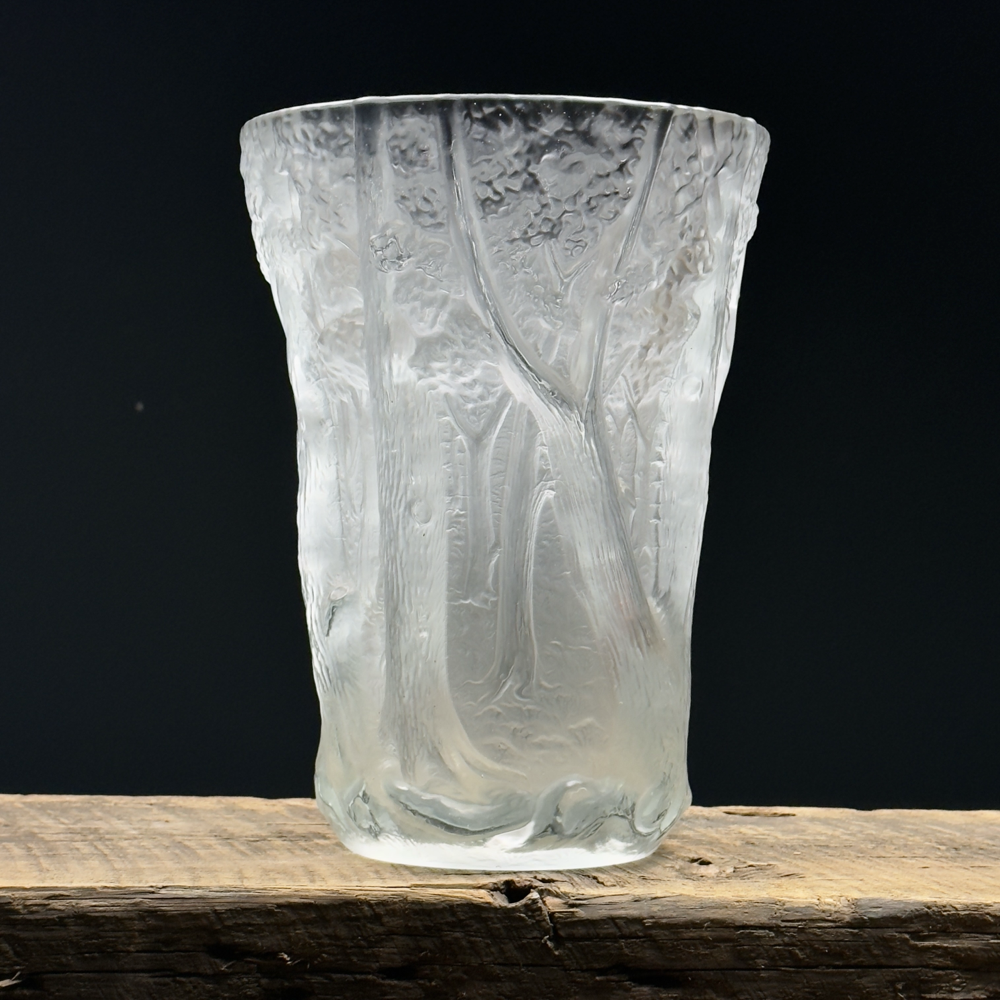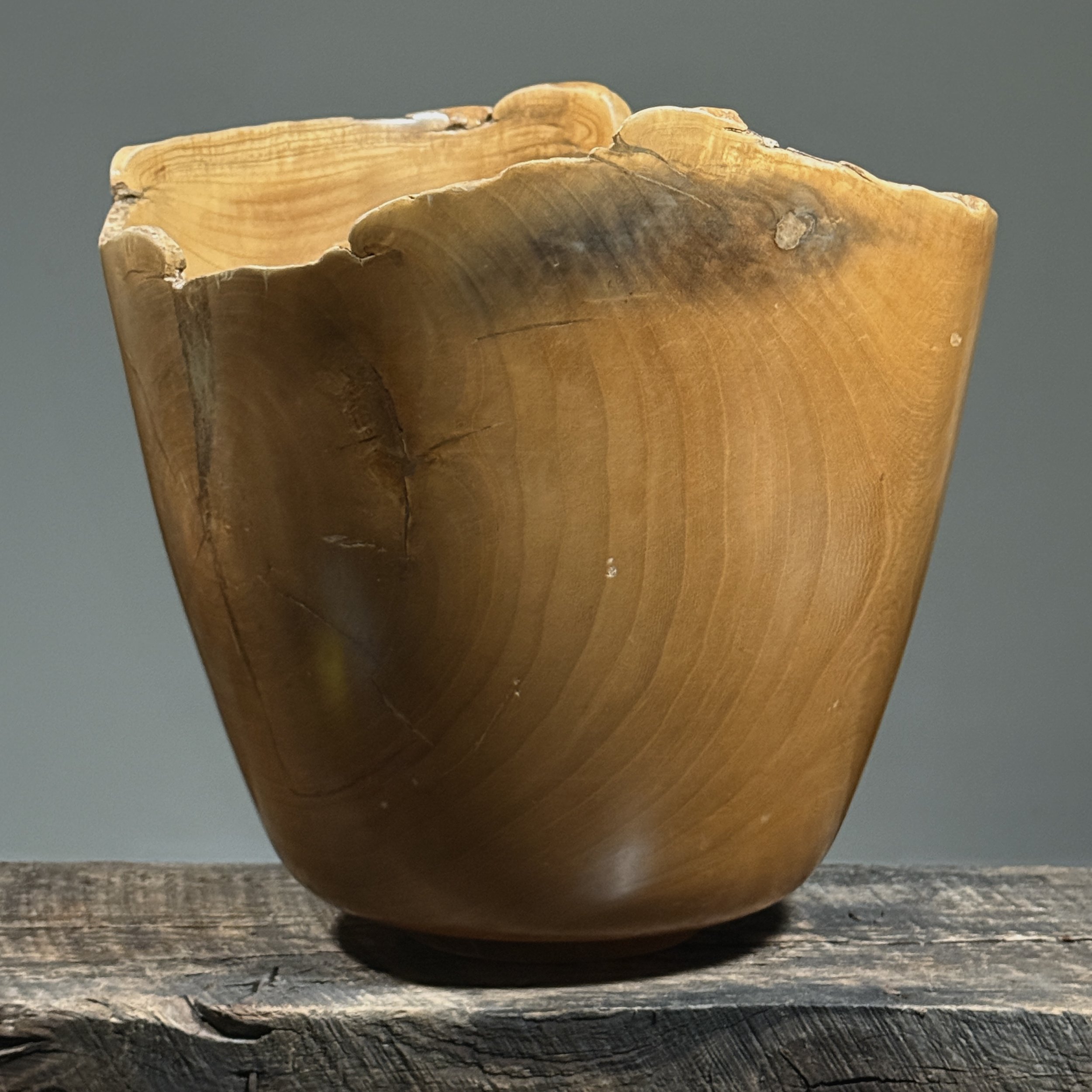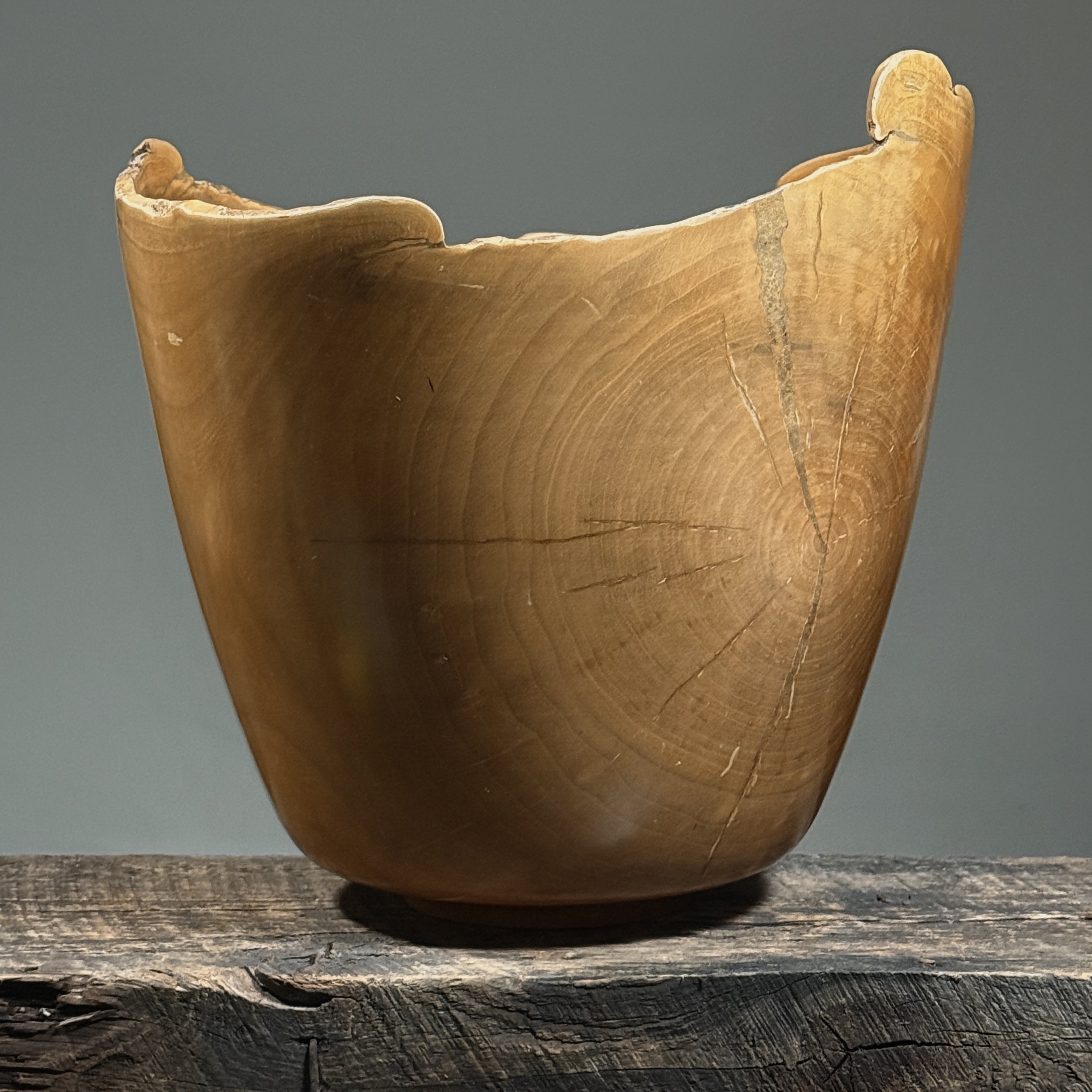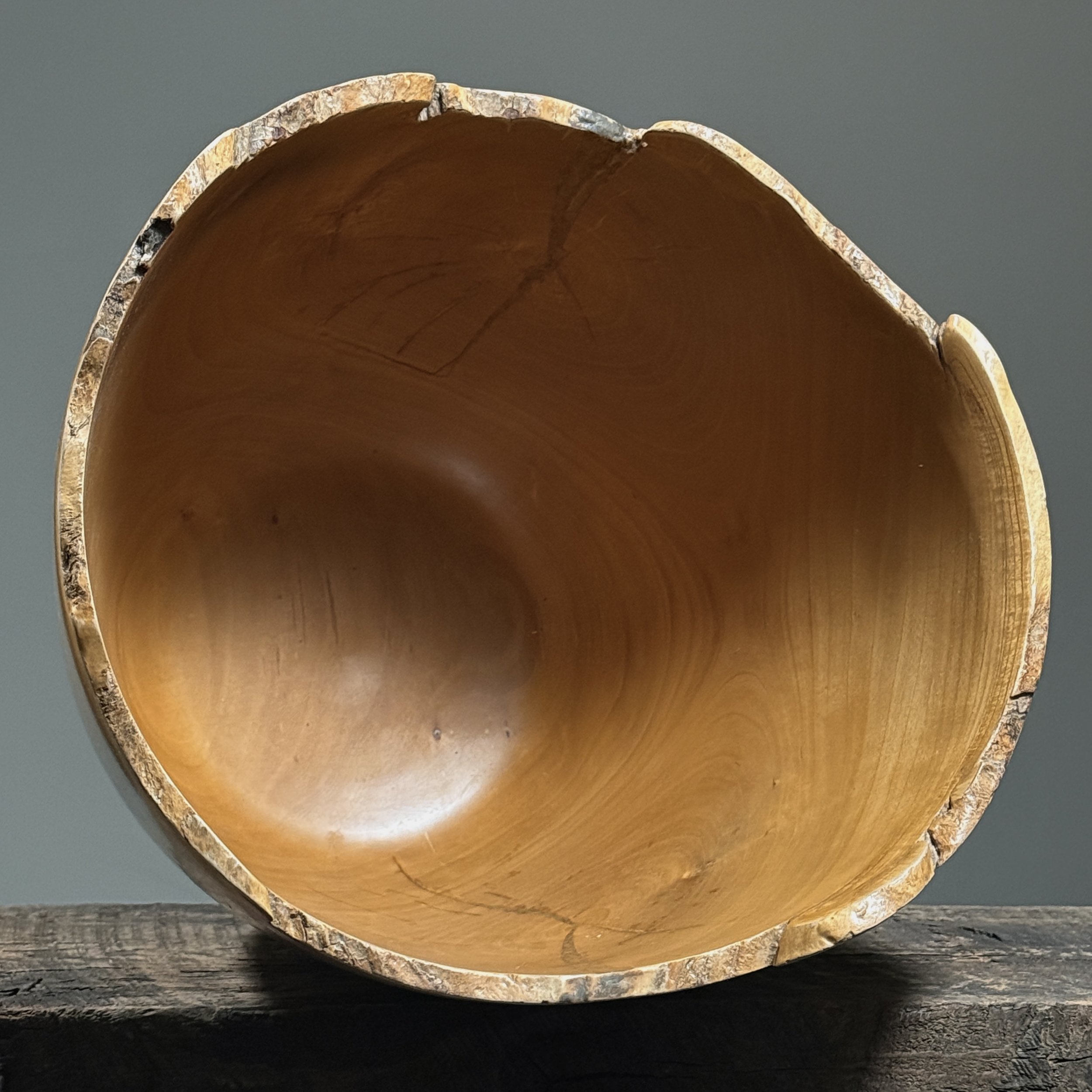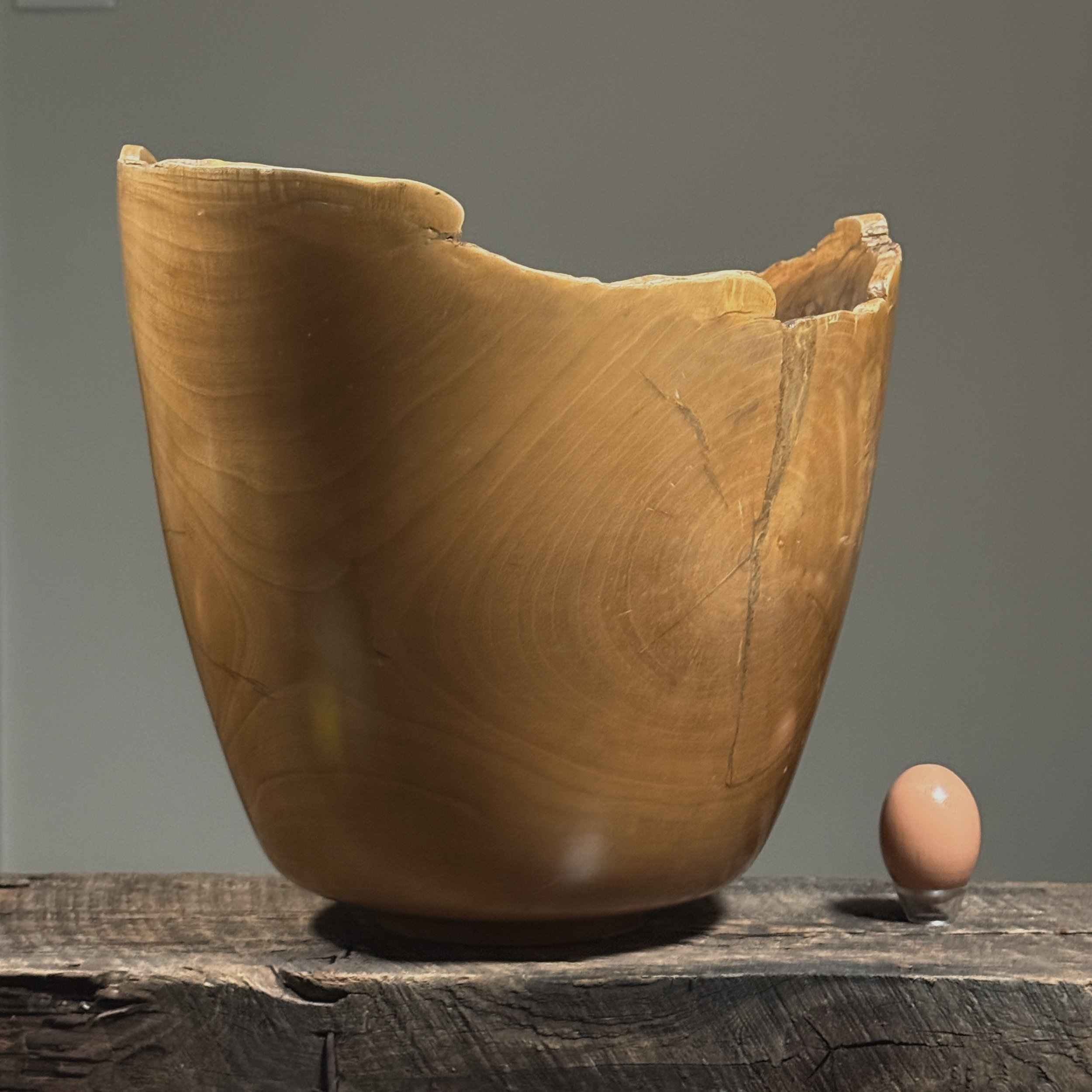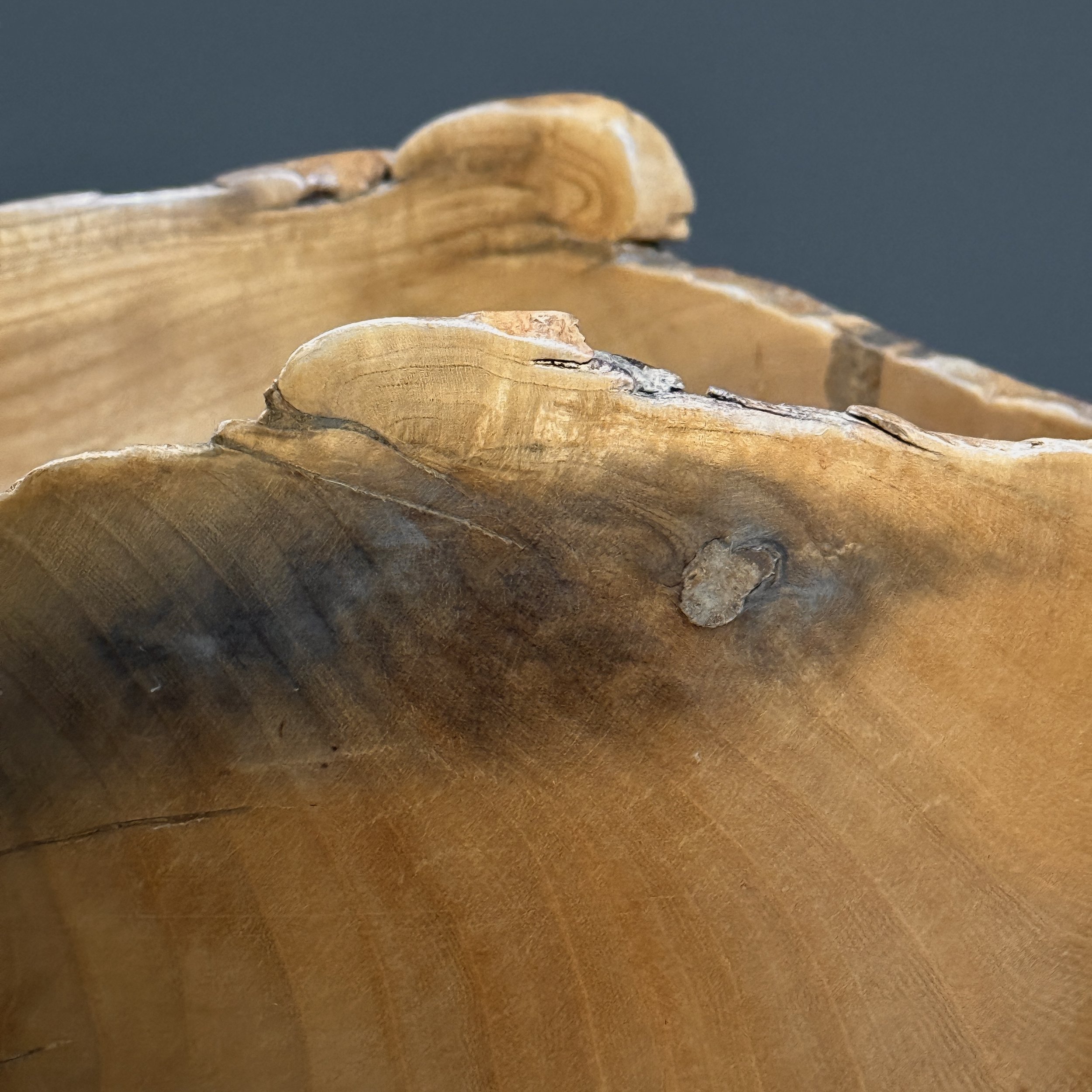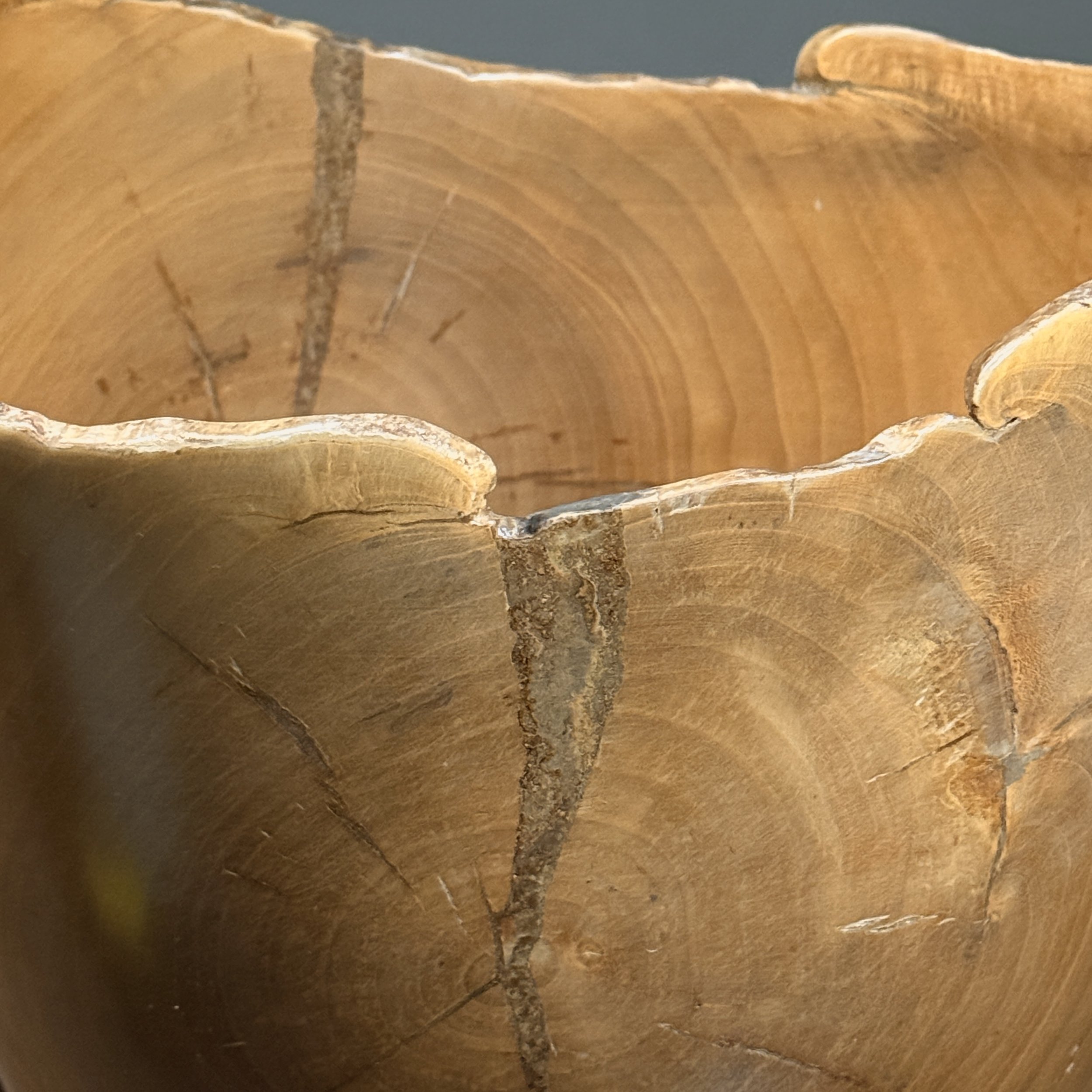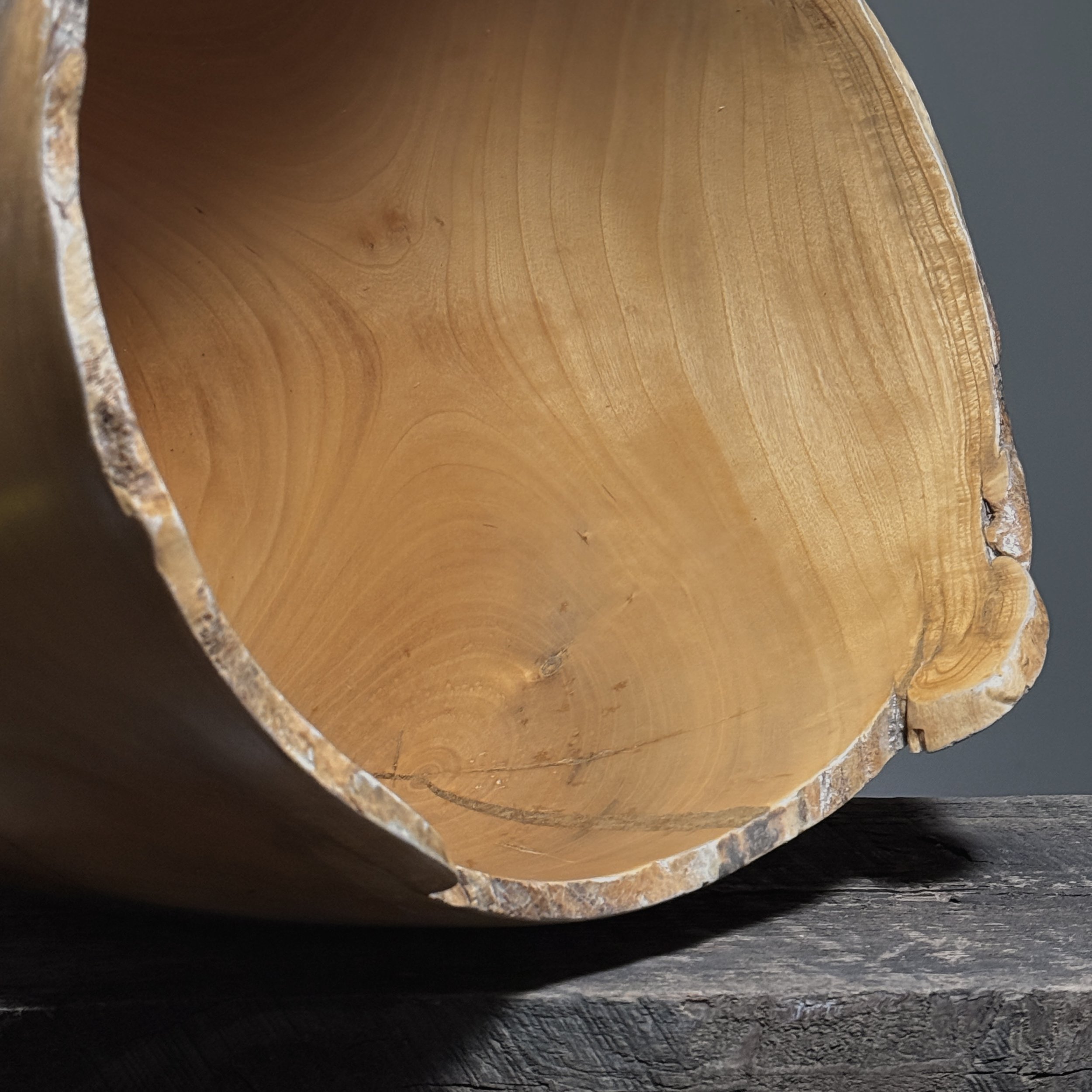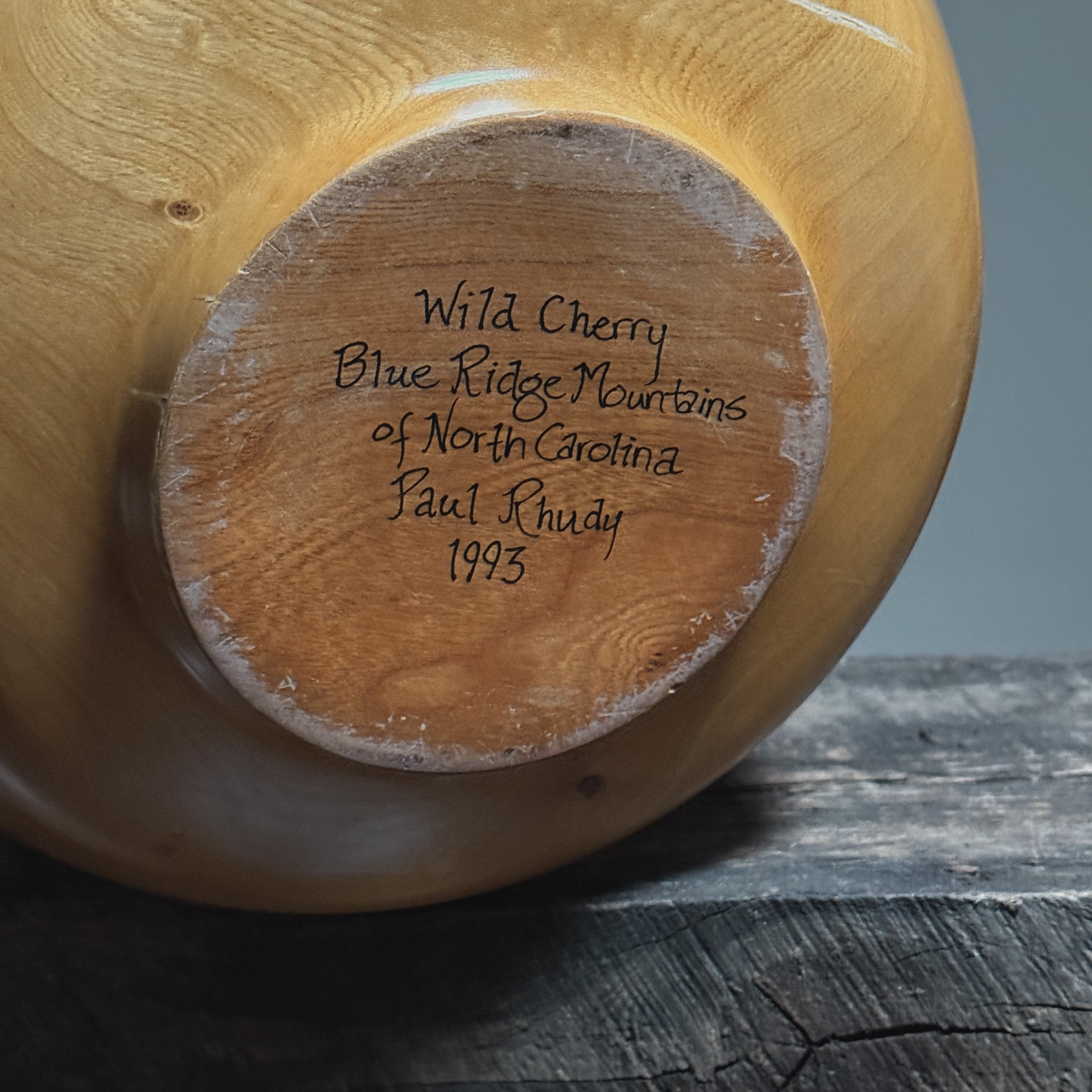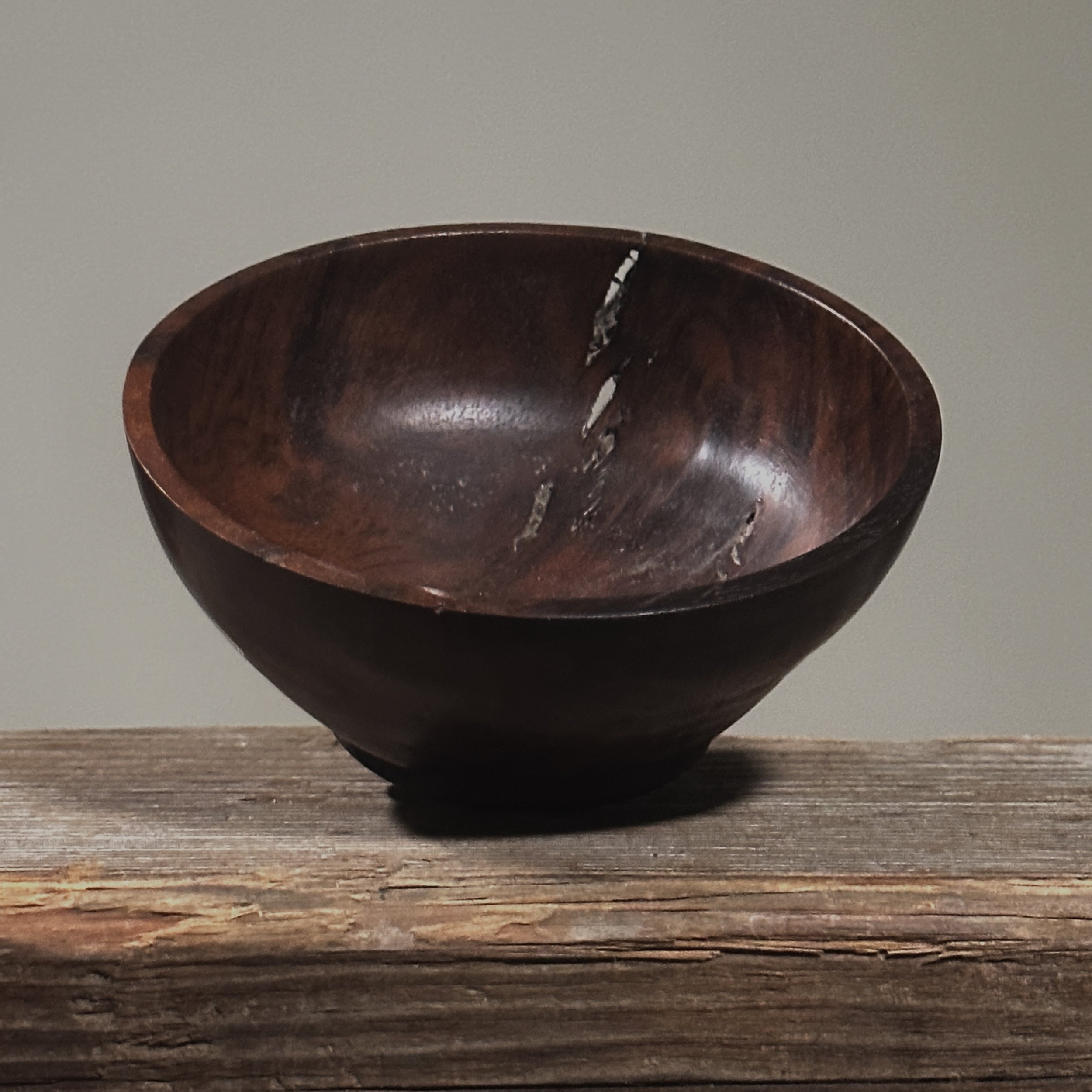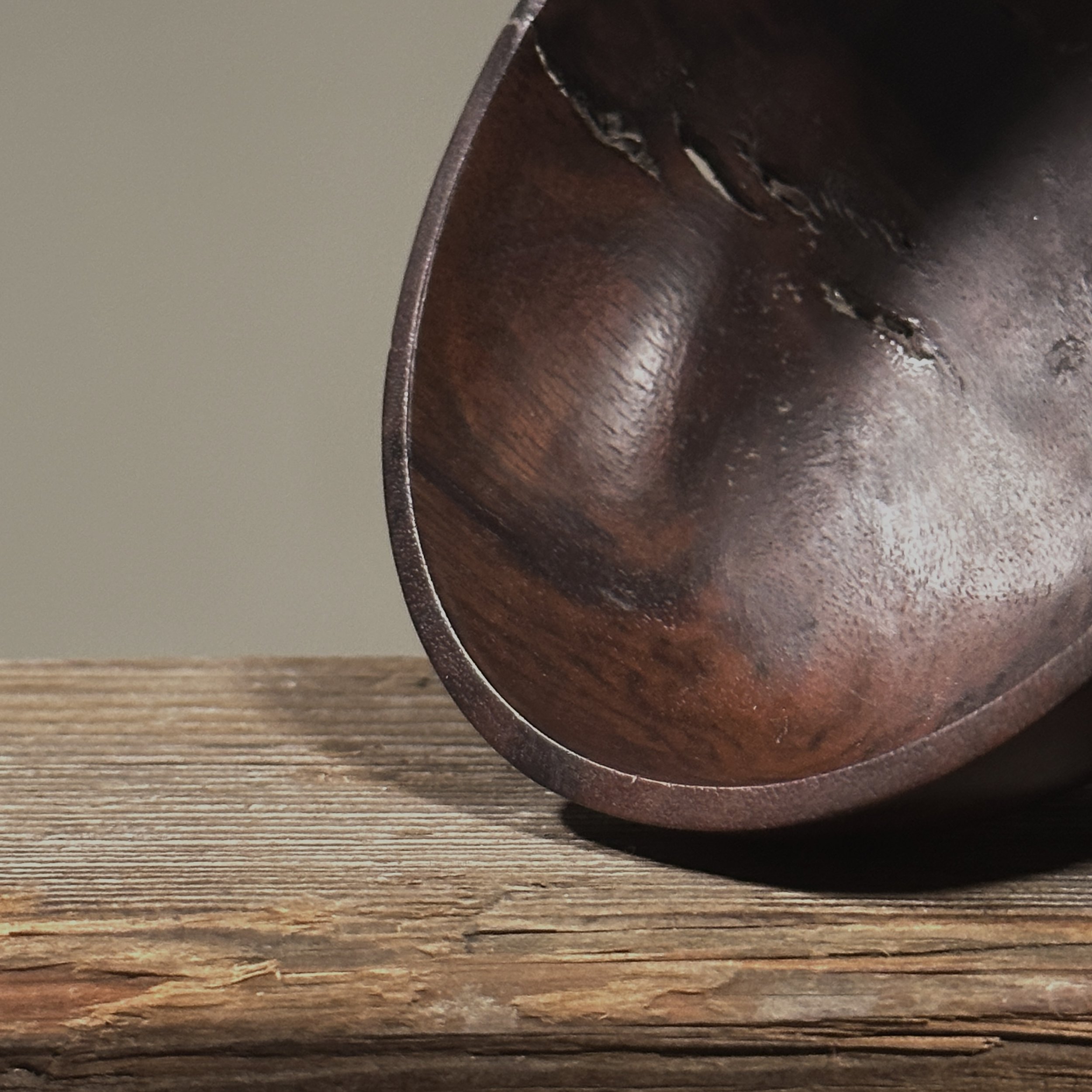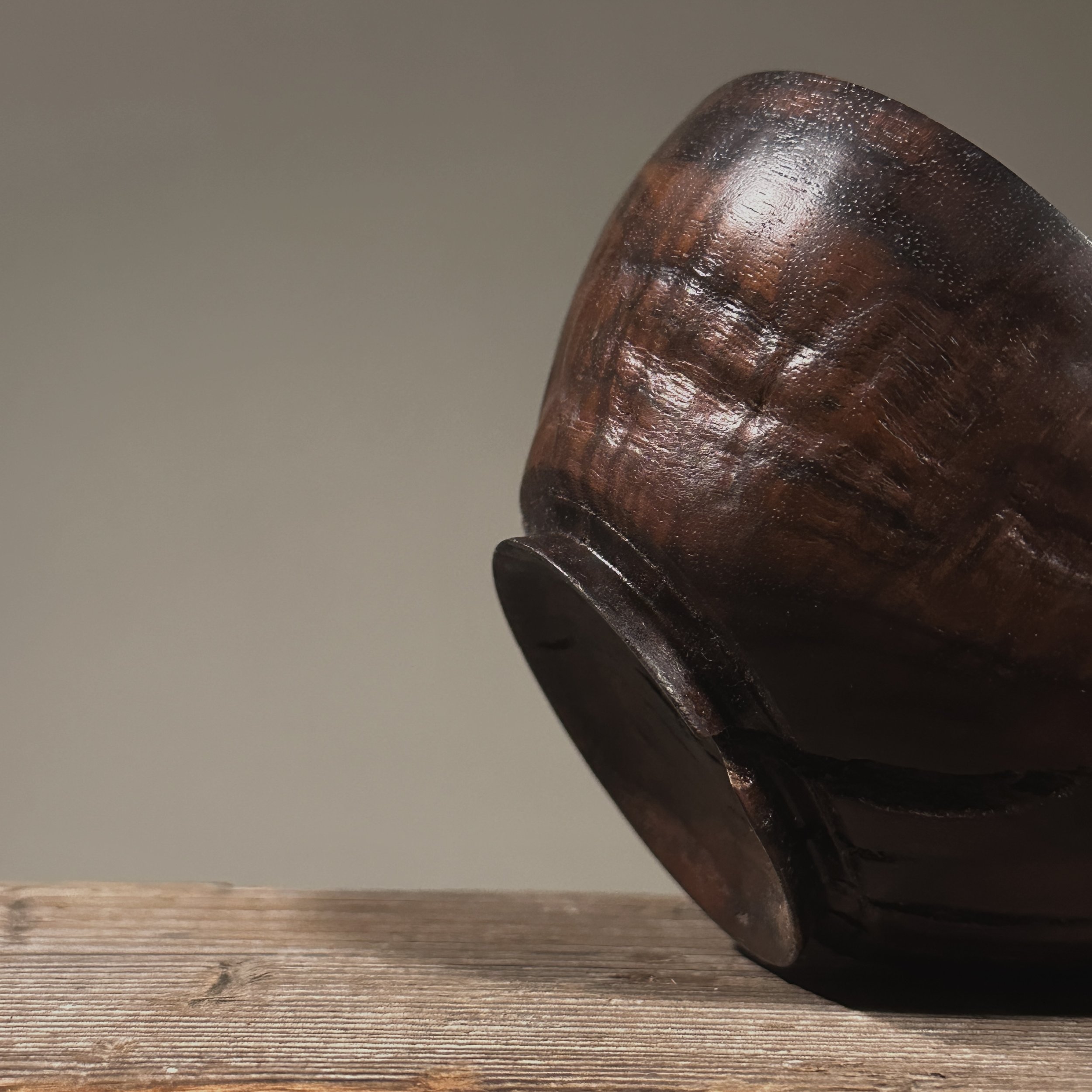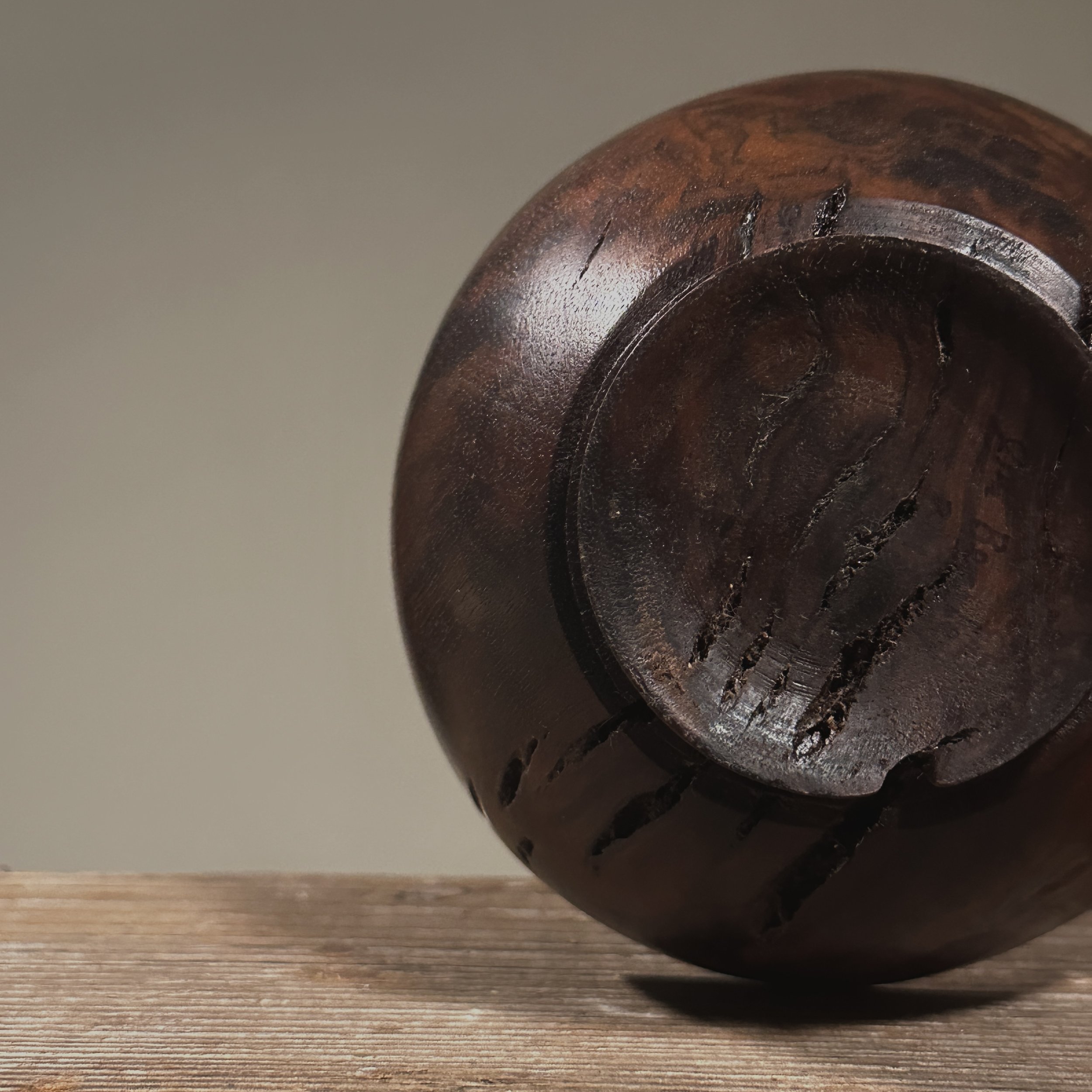 Image 1 of 9
Image 1 of 9

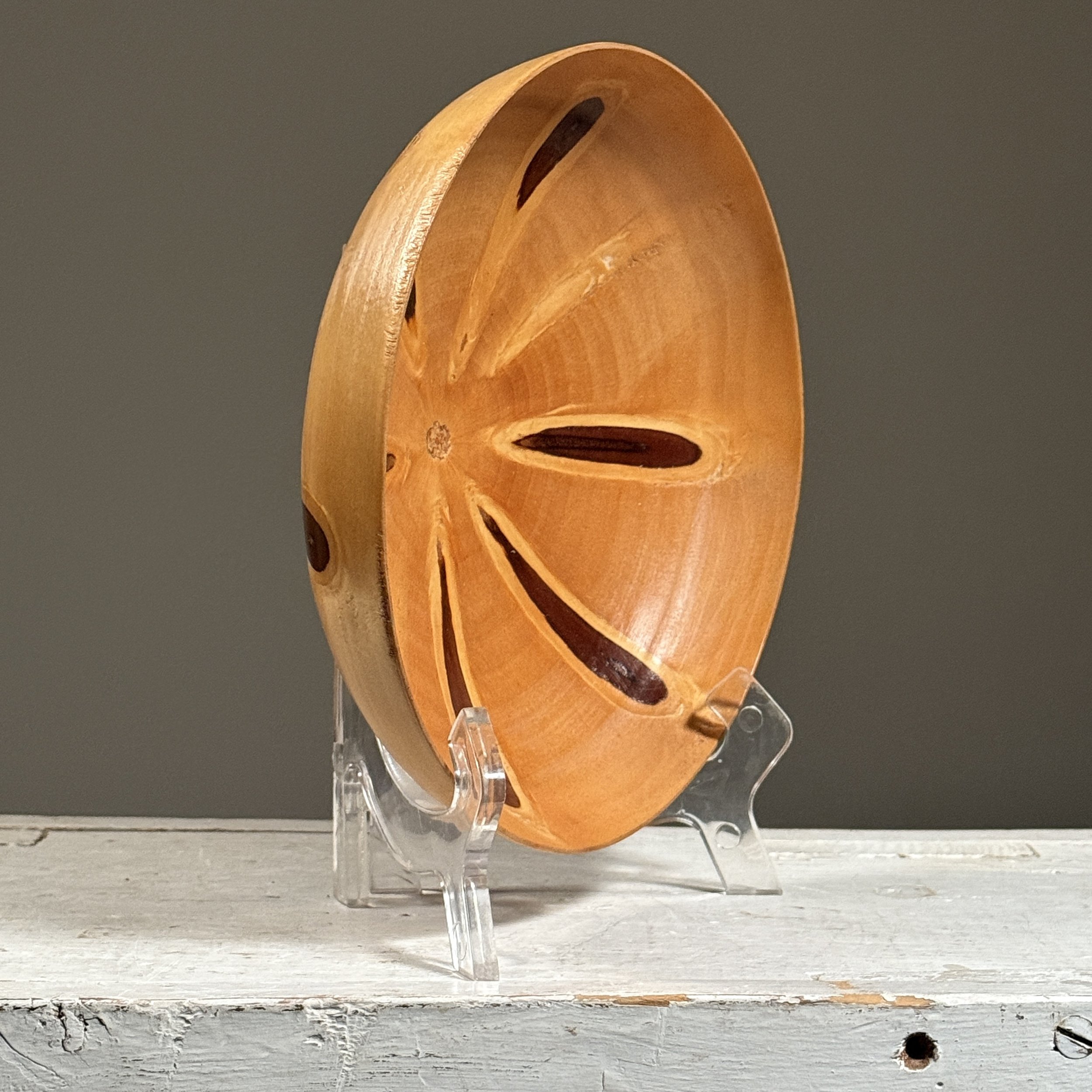 Image 2 of 9
Image 2 of 9

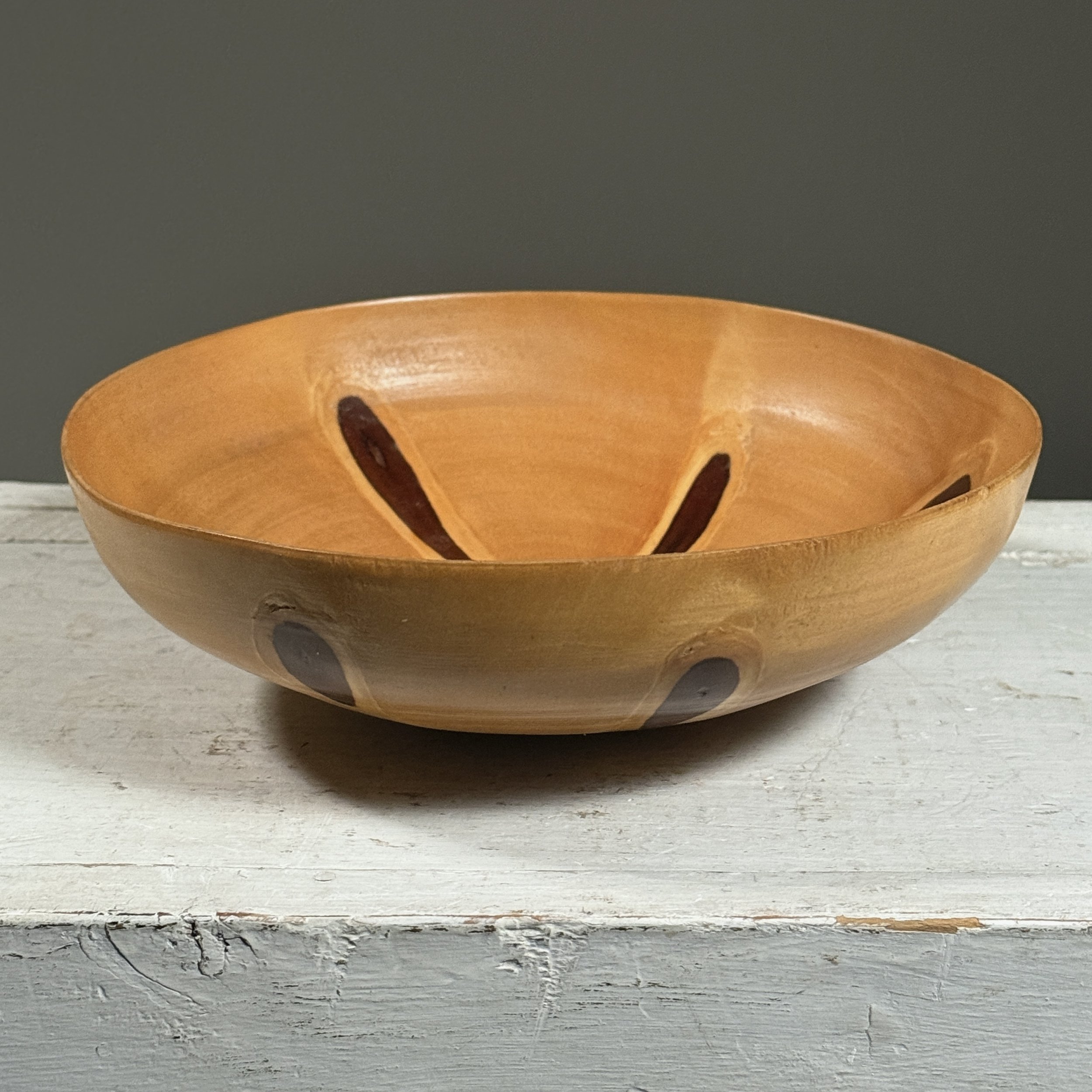 Image 3 of 9
Image 3 of 9

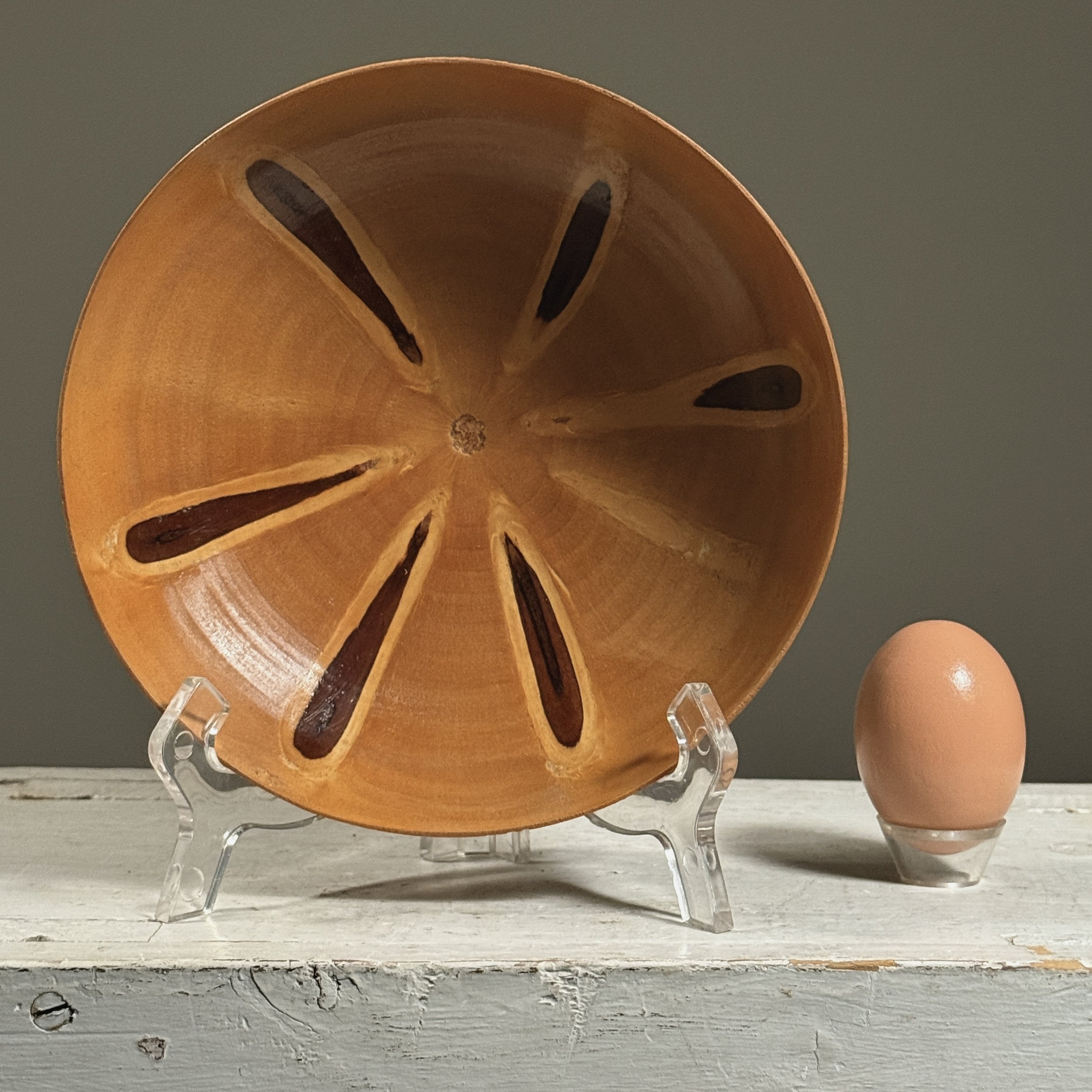 Image 4 of 9
Image 4 of 9

 Image 5 of 9
Image 5 of 9

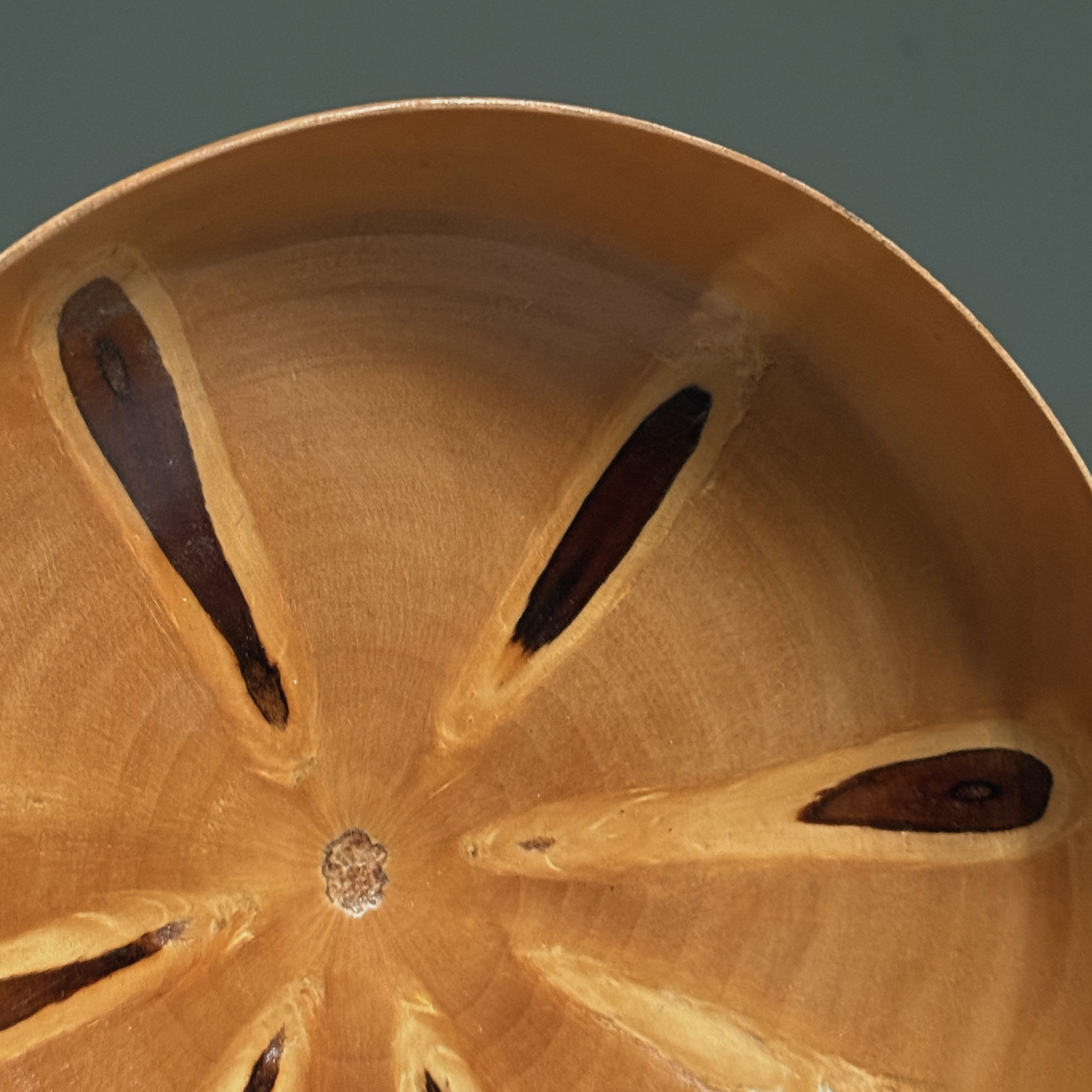 Image 6 of 9
Image 6 of 9

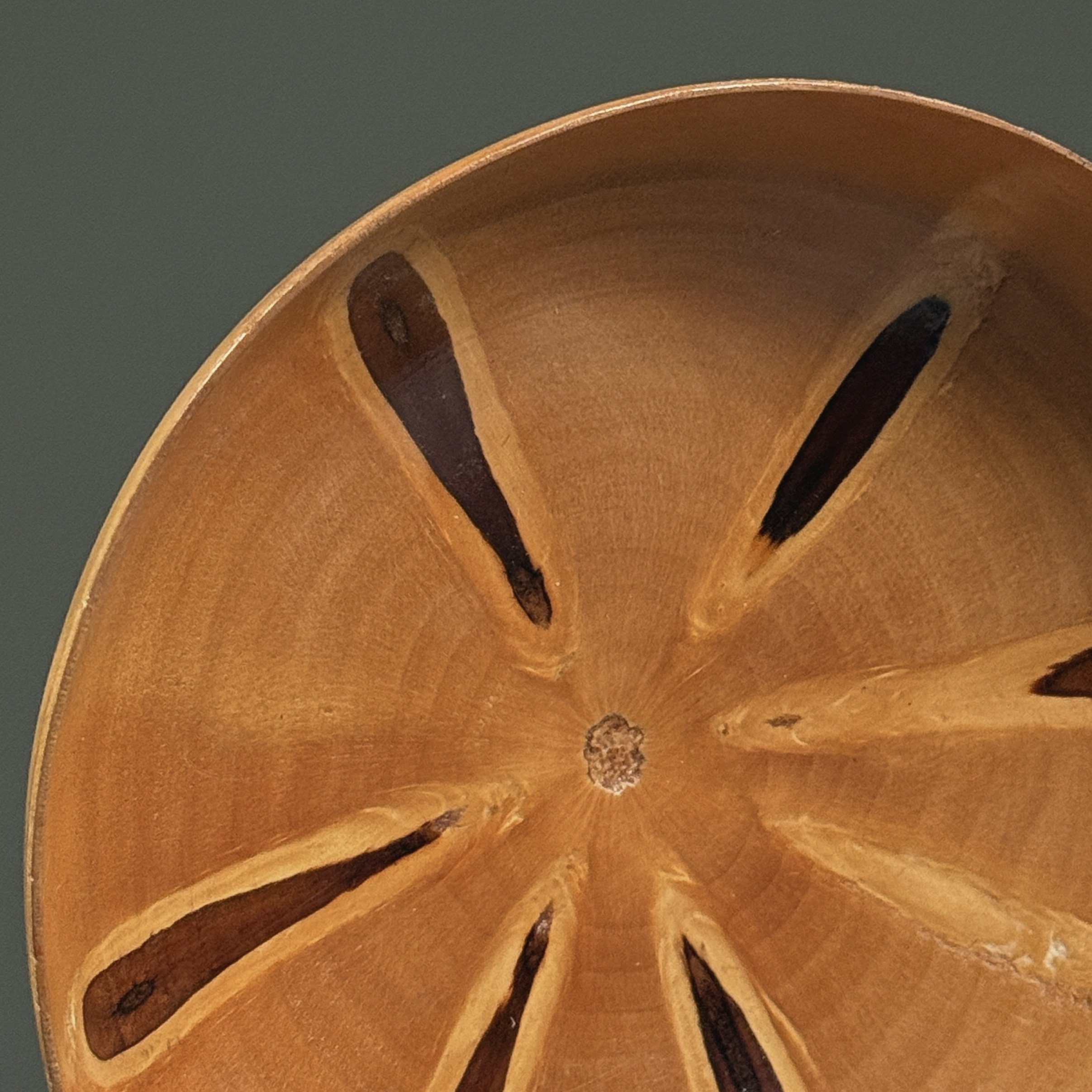 Image 7 of 9
Image 7 of 9

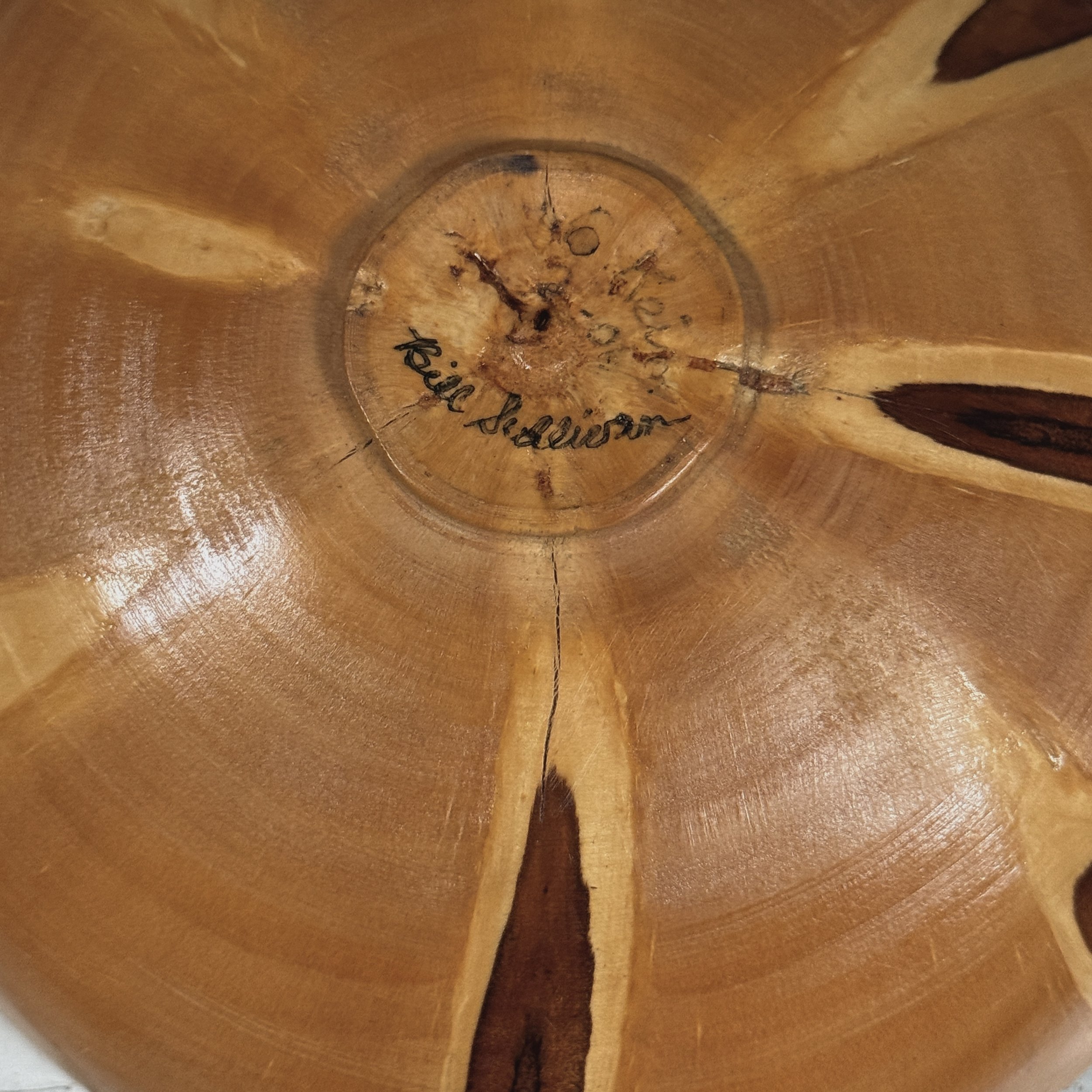 Image 8 of 9
Image 8 of 9

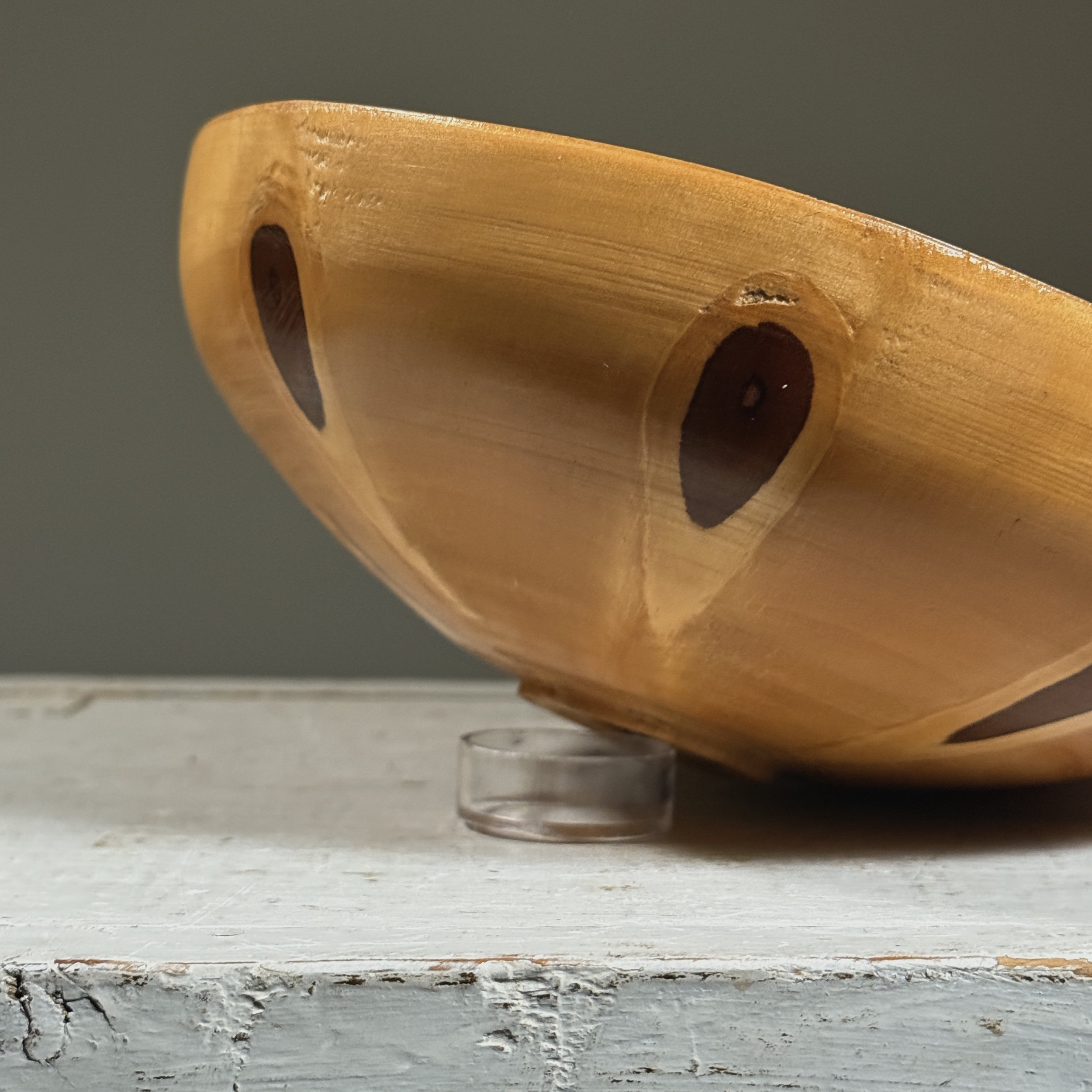 Image 9 of 9
Image 9 of 9










Vintage Studio Turned Norfolk Island Pine Bowl
Studio Turned Norfolk Island Pine Bowl
Late 20th century
Hand-turned Norfolk Island pine (Araucaria heterophylla)
7.5 × 2.5 in (19 × 6.4 cm)
Signed and labeled on base
Crafted from luminous Norfolk Island pine, the vessel achieves remarkable thinness, becoming semi-translucent when held to light—a testament to the artisan's technical skill. The wood's natural golden tones are enhanced by subtle figuring that radiates from the growth rings, creating a dynamic visual rhythm across the carefully shaped contours.
The bowl's minimalist design emphasizes the intrinsic beauty of the material while demonstrating the maker's sensitive approach to proportion and balance. Signed and labeled by the artist. Stand is not included.
Material Significance:
Norfolk Island pine, prized for its straight grain and pale golden color, was particularly favored by studio woodturners for its workability and optical qualities when finely turned.
Condition:
- Excellent structural integrity
- Surface with a fine, aged patina
- Minor handling marks consistent with careful use
- No cracks or warping
About Studio Woodturning:
This piece reflects the late 20th-century renaissance of artisanal woodturning, when makers began elevating functional objects to artistic statements. Similar works can be found in the collections of the Renwick Gallery (Smithsonian American Art Museum) and Museum of Arts and Design, New York.
Studio Turned Norfolk Island Pine Bowl
Late 20th century
Hand-turned Norfolk Island pine (Araucaria heterophylla)
7.5 × 2.5 in (19 × 6.4 cm)
Signed and labeled on base
Crafted from luminous Norfolk Island pine, the vessel achieves remarkable thinness, becoming semi-translucent when held to light—a testament to the artisan's technical skill. The wood's natural golden tones are enhanced by subtle figuring that radiates from the growth rings, creating a dynamic visual rhythm across the carefully shaped contours.
The bowl's minimalist design emphasizes the intrinsic beauty of the material while demonstrating the maker's sensitive approach to proportion and balance. Signed and labeled by the artist. Stand is not included.
Material Significance:
Norfolk Island pine, prized for its straight grain and pale golden color, was particularly favored by studio woodturners for its workability and optical qualities when finely turned.
Condition:
- Excellent structural integrity
- Surface with a fine, aged patina
- Minor handling marks consistent with careful use
- No cracks or warping
About Studio Woodturning:
This piece reflects the late 20th-century renaissance of artisanal woodturning, when makers began elevating functional objects to artistic statements. Similar works can be found in the collections of the Renwick Gallery (Smithsonian American Art Museum) and Museum of Arts and Design, New York.
Studio Turned Norfolk Island Pine Bowl
Late 20th century
Hand-turned Norfolk Island pine (Araucaria heterophylla)
7.5 × 2.5 in (19 × 6.4 cm)
Signed and labeled on base
Crafted from luminous Norfolk Island pine, the vessel achieves remarkable thinness, becoming semi-translucent when held to light—a testament to the artisan's technical skill. The wood's natural golden tones are enhanced by subtle figuring that radiates from the growth rings, creating a dynamic visual rhythm across the carefully shaped contours.
The bowl's minimalist design emphasizes the intrinsic beauty of the material while demonstrating the maker's sensitive approach to proportion and balance. Signed and labeled by the artist. Stand is not included.
Material Significance:
Norfolk Island pine, prized for its straight grain and pale golden color, was particularly favored by studio woodturners for its workability and optical qualities when finely turned.
Condition:
- Excellent structural integrity
- Surface with a fine, aged patina
- Minor handling marks consistent with careful use
- No cracks or warping
About Studio Woodturning:
This piece reflects the late 20th-century renaissance of artisanal woodturning, when makers began elevating functional objects to artistic statements. Similar works can be found in the collections of the Renwick Gallery (Smithsonian American Art Museum) and Museum of Arts and Design, New York.

